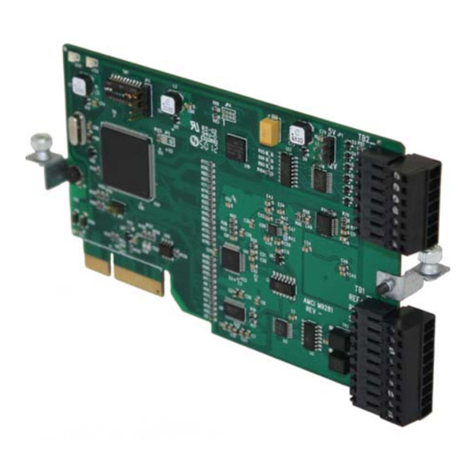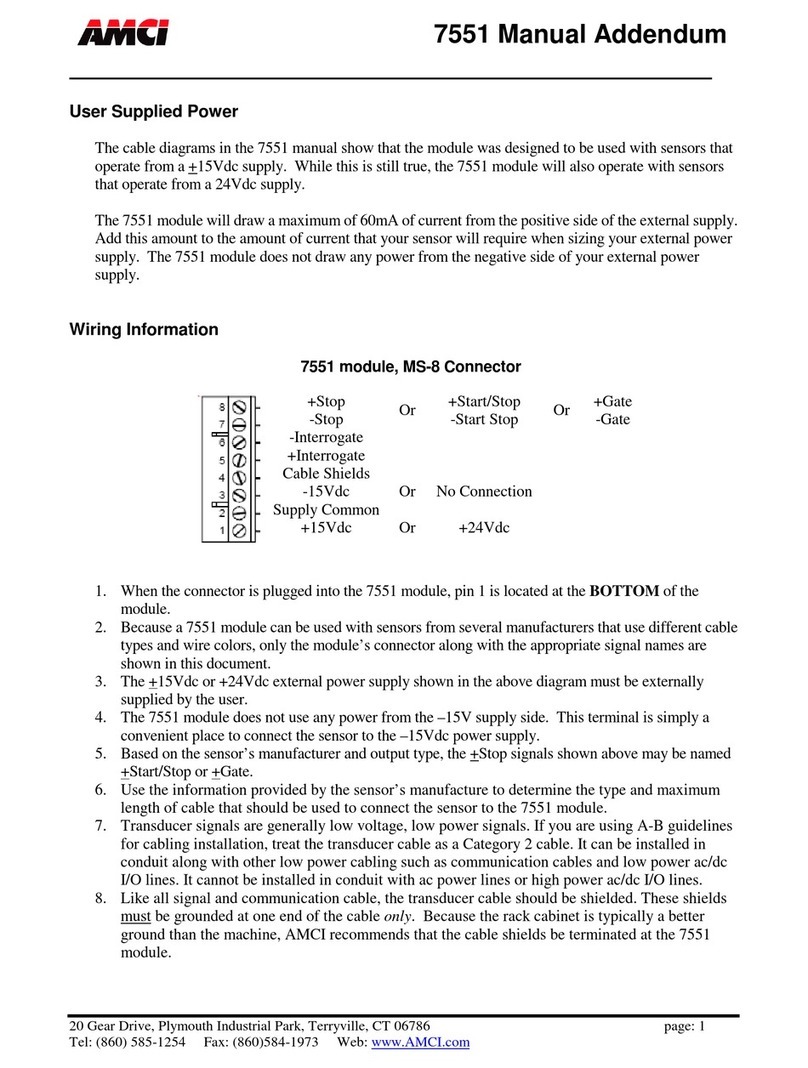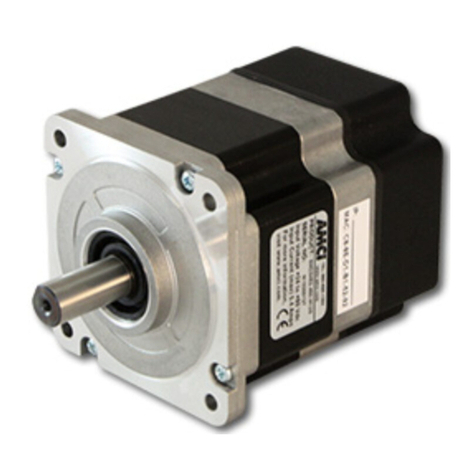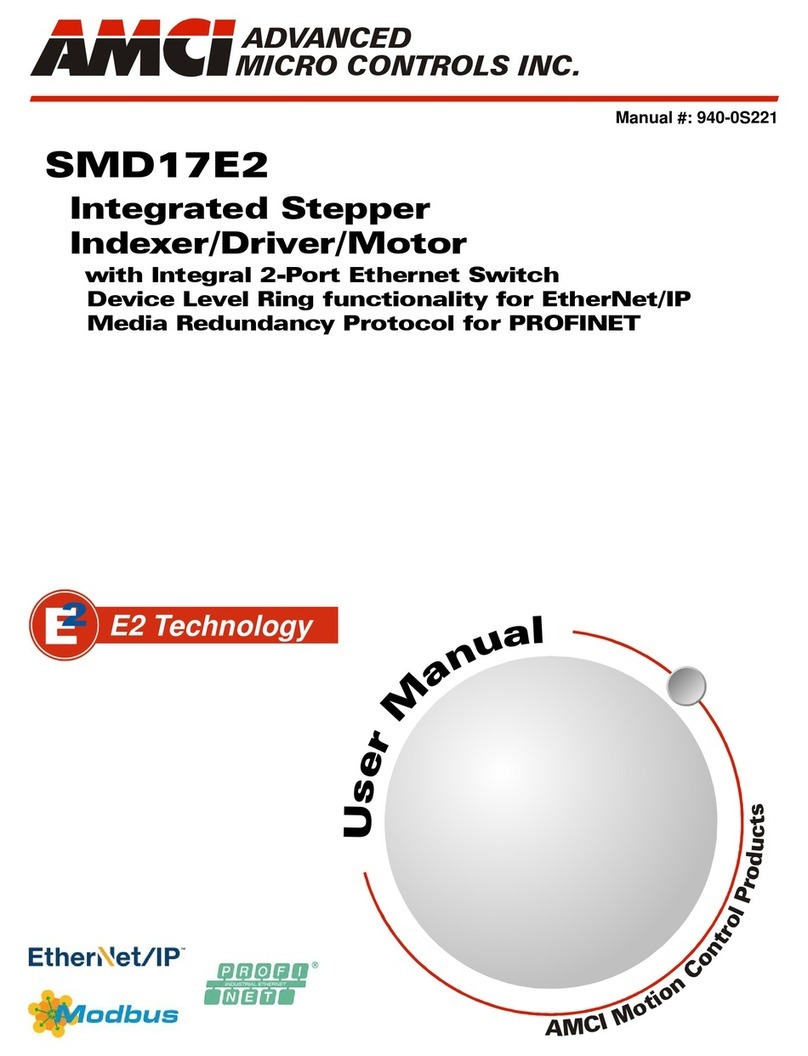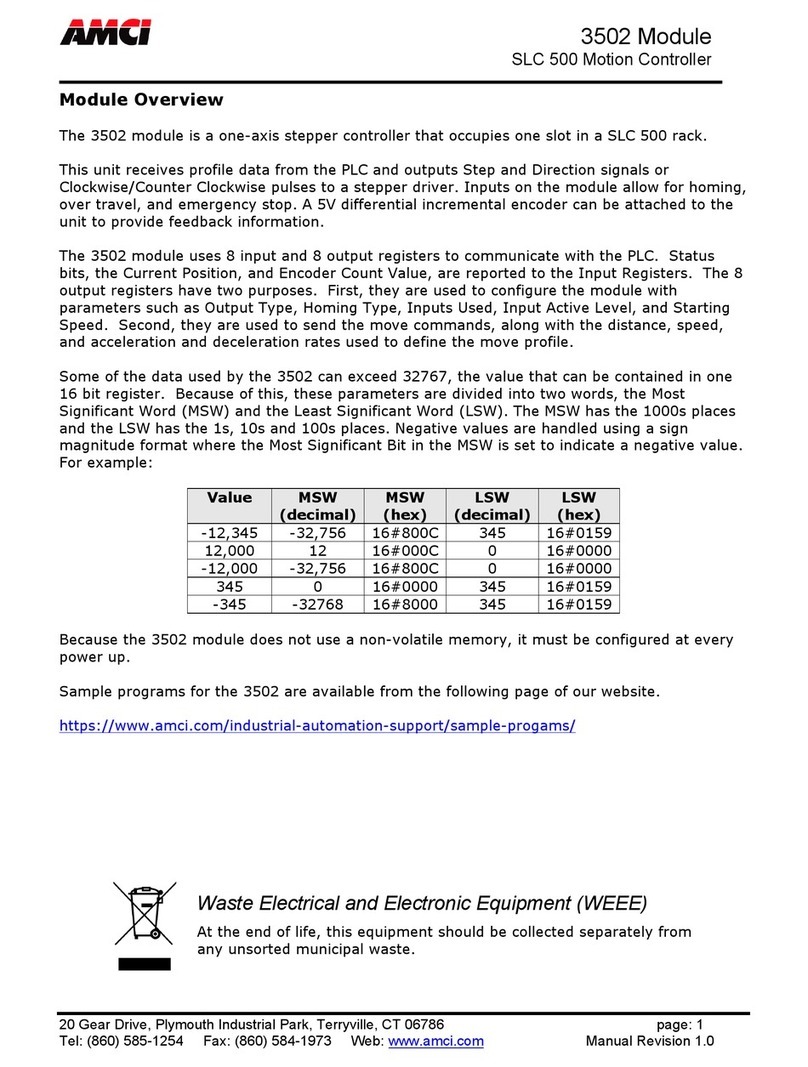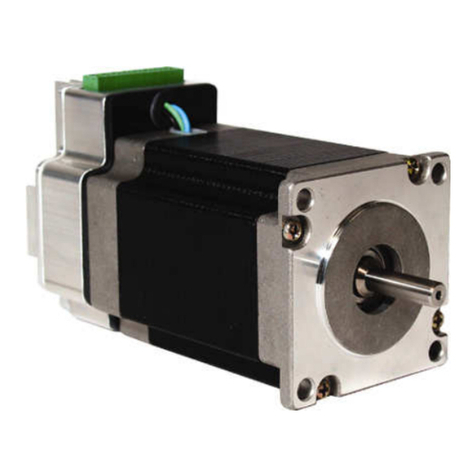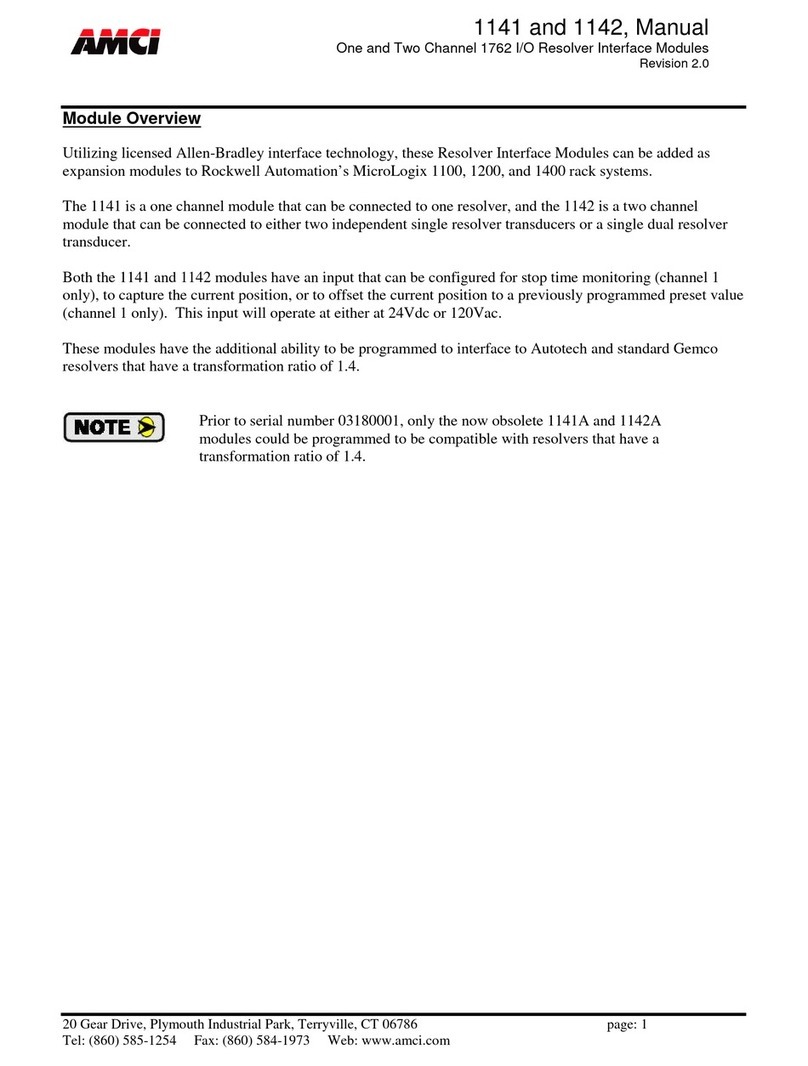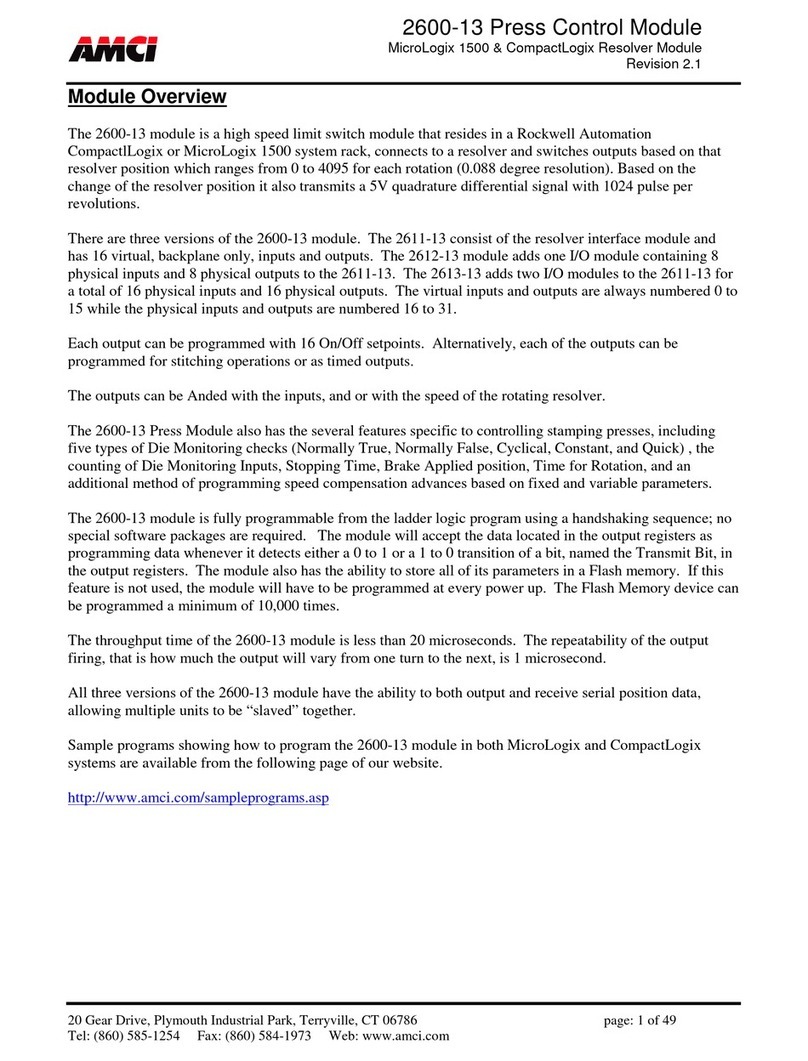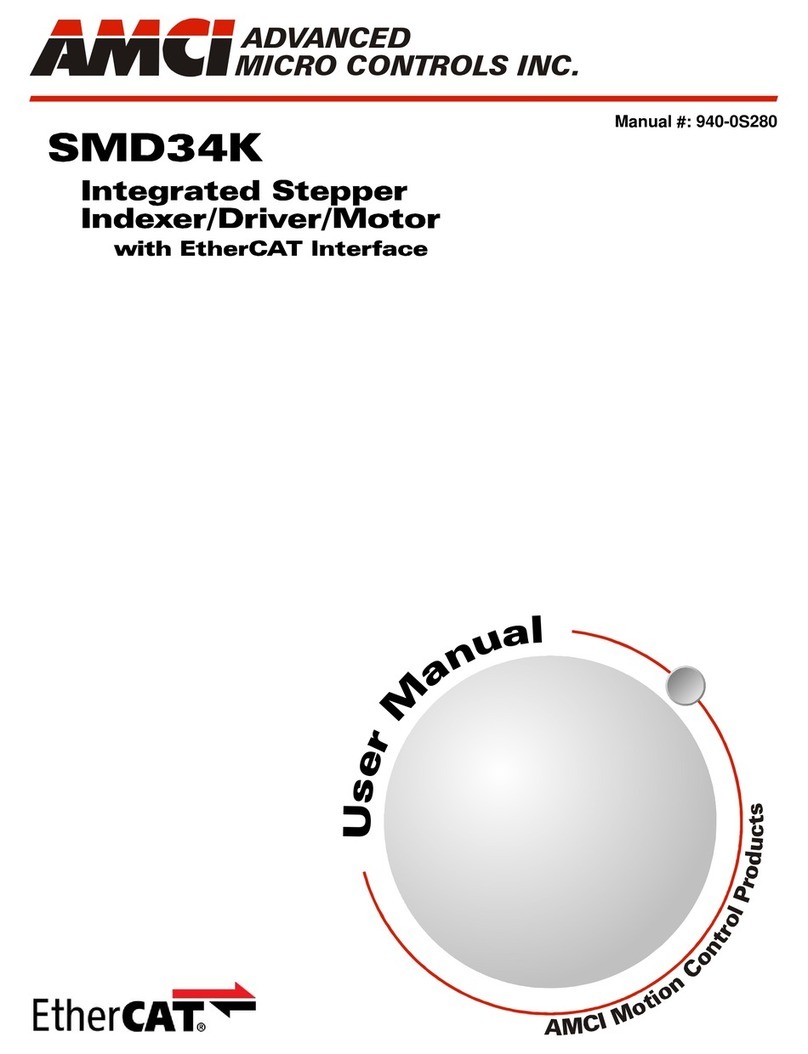
20 Gear Drive, Plymouth Ind. Park, Terryville, CT 06786
Tel: (860) 585-1254 Fax: (860) 584-1973 http://www.amci.com
Networked Indexer/Driver User Manual
TABLE OF CONTENTS
5
Reference: General Installation
Guidelines
Grounding ................................................ 89
Grounding Electrode System ......... 89
Ground Bus .................................... 89
Grounding Electrode Conductor .... 90
Grounding Wires ........................... 90
Avoiding Grounding Problems ................ 90
Surge (EMI) Suppression ......................... 91
Incoming Power ............................ 91
Inductive Loads ............................. 92
System Environment ..................... 92
System Layout Considerations ................ 92
Wiring Categories for the
SD17060E2 or SD31045E2 ........ 92
Minimize Voltages in the
System Enclosure ........................ 93
Power Supply Sizing ..................... 93
Component Placement ................... 93
Conduits to Enclosure .................... 94
Installing an AMCI Networked Driver .... 94
Task 1: Installing an AMCI
Networked Driver
Location ................................................... 95
Safe Handling Guidelines ........................ 95
Prevent Electrostatic Damage ........ 95
Prevent Debris From
Entering the Unit ......................... 95
Remove Power Before Servicing .. 95
Airflow and Wiring Space ....................... 95
Outline Drawings ..................................... 96
SD17060E2 Outline Drawing ........ 96
SD31045E2 Outline Drawing ........ 97
Mounting Methods ................................... 97
Grounding and Powering the System ...... 98
Installing the Stepper Motor .................... 99
Outline Drawings ........................... 99
Mounting the Motor ...................... 99
Connecting the Load ...................... 99
Extending the Motor Cable ........... 99
Installing the Motor Cable ............. 99
Connecting the Motor .............................. 100
Motor Connector ........................... 100
Interlock Wiring ............................ 100
Motor Wiring ................................. 101
Task 1: Installing an AMCI Net-
worked Driver (continued)
Digital Input Wiring ................................. 102
Cable Shields ................................ 102
Input Wiring .................................. 102
Output Wiring ............................... 103
Encoder Wiring ............................. 103
Ethernet Connections ............................... 104
EtherNet/IP Connections .......................... 104
Non-DLR Applications ................. 104
DLR Applications ......................... 104
PROFINET Connections .......................... 104
Non-MRP Applications ................ 104
MRP Applications ......................... 104
Modbus TCP Connections ....................... 105
Task 2: Set the IP Address
Determine the Best Method for
Setting the IP Address ............................ 107
Use Factory Default Settings ................... 107
Use the Embedded Web Server ................ 108
Use the AMCI NET Configurator
Utility ..................................................... 111
Task 3: Using the EDS File with
EtherNet/IP
Problems On Some Systems .................... 115
Obtain the EDS file .................................. 115
Install the EDS file ................................... 115
Start the EDS Hardware
Installation Tool .......................... 115
Install the EDS File ....................... 116
Configure the Ethernet Adapter
on Your PLC .......................................... 118
Add the SD17060E2 or SD31045E2
to Your Project ....................................... 118
Configure the SD17060E2 or
SD31045E2 Driver ................................. 119
General Tab ................................... 119
Connection Tab ............................. 119
Configuration Tab ......................... 119
Buffering the I/O Data ............................. 120
Task 4: Implicit Communications
Without EDS
Host System Configuration ...................... 121
Adding the SD17060E2 or SD31045E2 .. 121
Configuring the SD17060E2 or
SD31045E2 ............................................ 123
Buffering I/O Data ................................... 124
